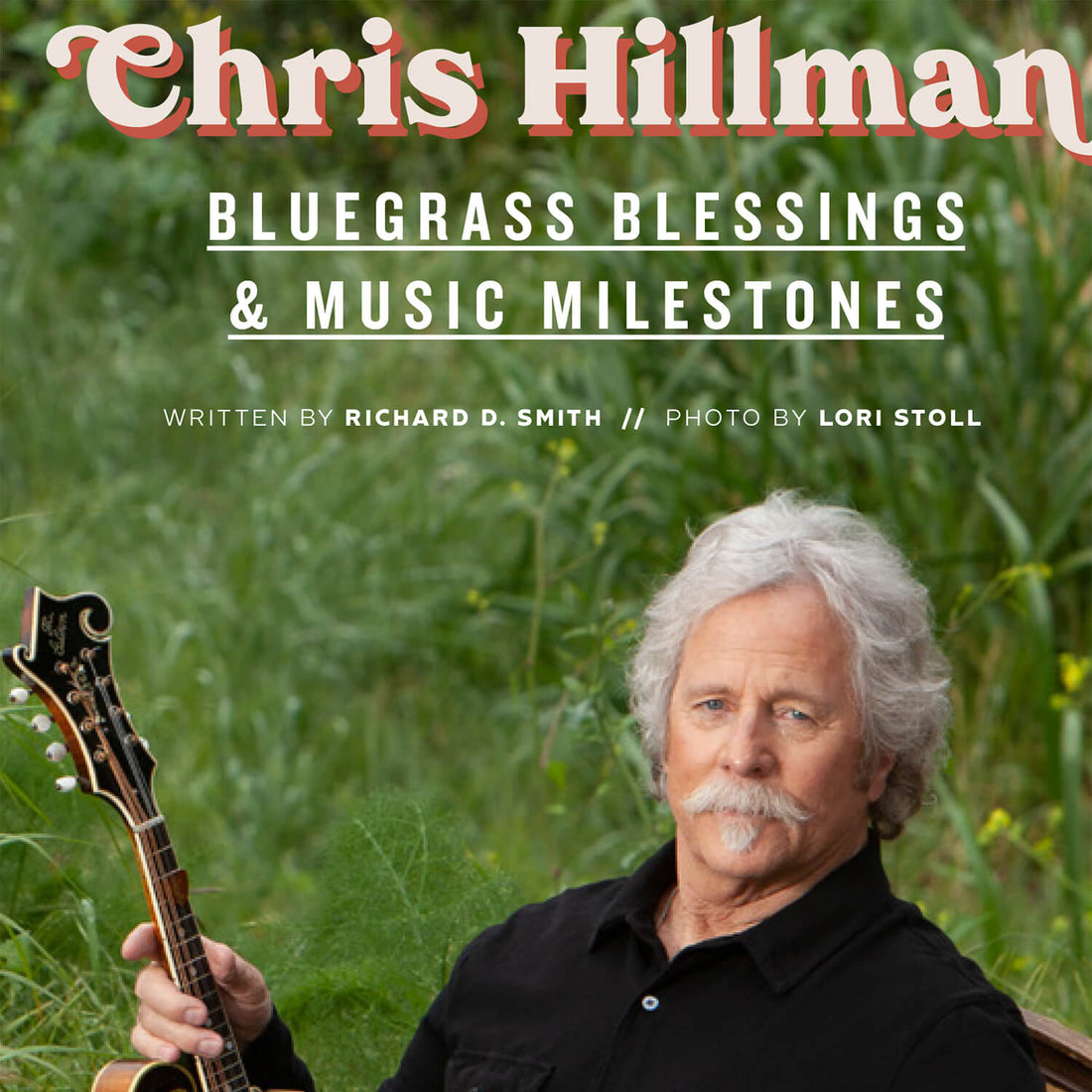Written By Richard D. Smith
As agreed, the two mandolin players met up at the historic Ryman Auditorium in Nashville. They opened their instrument cases and brought out their vintage Gibson F-5 instruments while a professional photographer stood by to capture their meeting. One was Bill Monroe, the Father of Bluegrass himself. The other was Chris Hillman, co-founder of the Byrds, the hugely successful rock band hailed in the 1960s and ‘70s as “America’s Beatles,” and the Flying Burrito Brothers and the Desert Rose Band, innovative ensembles which would bring him recognition as a “Daddy of Country Rock.”
It was 1989, and Hillman had been invited by Rolling Stone magazine to be part of a special pictorial featuring rock stars and their music heroes. Chris had immediately accepted, naming Bill as his choice. (The pictorial, “Sweet Inspirations,” ran in the September 26 issue.)
“Monroe showed up dressed to the nines,” Hillman recalls fondly. But why would Bill Monroe show up at all, to be depicted with a rock musician? Perhaps Bill knew that Chris’s musical roots had taken hold in bluegrass and remained there, deeply. Indeed, Chris Hillman’s musical development went hand-inhand and pick-on-string with the growth of the vibrant California bluegrass scene. The groups in which he played—notably the Scottsville Squirrel Barkers, the Golden State Boys and the Hillmen—are now legendary in West Coast bluegrass lore. Hillman and his friends—Roland and Clarence White; Tony and Larry Rice; Herb Pedersen; Don Parmley; and Scott Hambley, to name only a very few— won bluegrass fame far beyond even California’s expansive territory.
And Hillman keeps returning to his bluegrass and classic country roots. That’s abundantly clear in his recent enthusiastically-received autobiography Time Between: My Life as a Byrd, Burrito Brother, and Beyond (BMG Books). Indeed, “Time Between” is the title of a popular number penned by Hillman during the height of his Byrds stardom. When it was recorded in 1966, the group was still heavily identified with folkrock and psychedelic sounds. But it’s real country, foreshadowing the Byrds’ landmark 1968 country-and bluegrassflavored album Sweetheart of the Rodeo…

